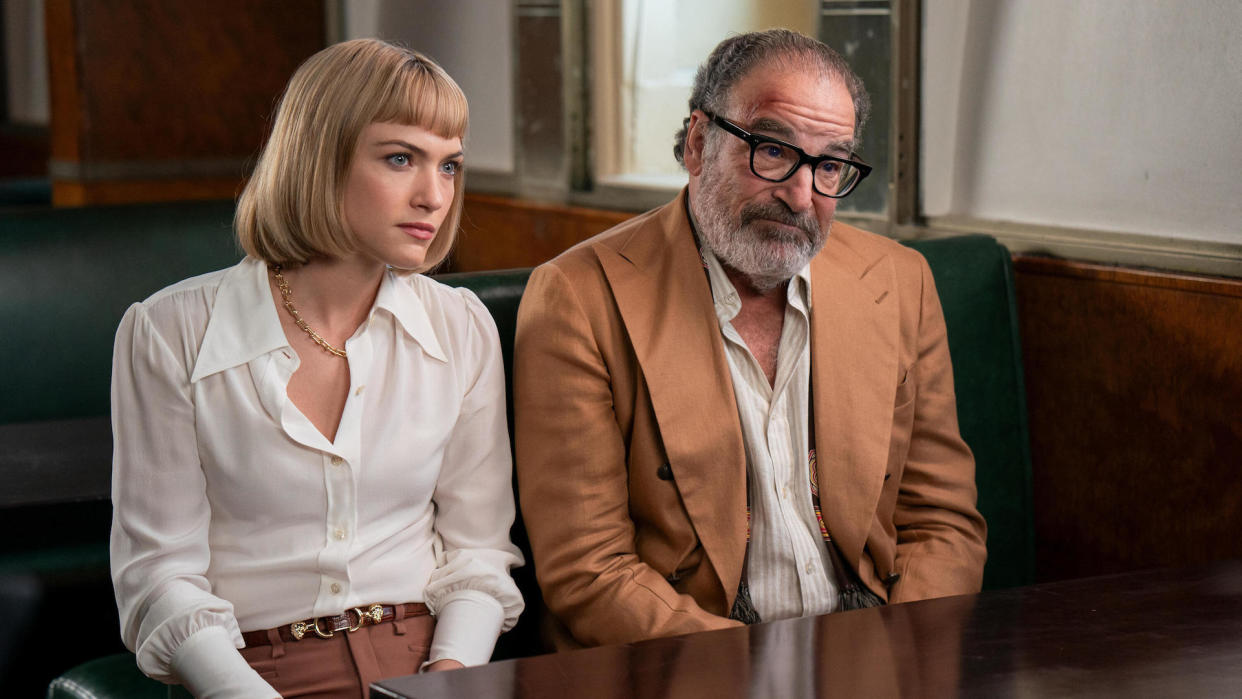‘Death and Other Details’ Review: Diet Murder Mystery Ensemble Will Have You Begging for the Real Thing

- Oops!Something went wrong.Please try again later.
- Oops!Something went wrong.Please try again later.
“Pay attention: Details matter,” growls a heavily accented Mandy Patinkin as detective Rufus Cotesworth in the opening seconds of “Death and Other Details,” created by Heidi Cole McAdams and Mike Weiss. There’s more to the quote — hours, and hours, in fact, of droll monologues about perception and detection throughout the series — but Hulu and ABC Signature’s new show appears to have skimped heavily on attention to detail, resulting in a product so shallow, so ramshackle, that it borders on unwatchable.
To its detriment, “Death and Other Details” is not as much about Rufus Cotesworth (a character who will only be referred to by his delightful full name throughout this piece), but about Imogene Scott (Violett Beane), who met him as a child while he was investigating her mother’s death. The orphaned Imogene was taken in by the Colliers, a family of the kind of wealth that outwardly denotes certain levels of evil — while also shadowing Rufus Cotesworth as amateur detective until he suddenly drops the case. In the present, the Colliers are on a lavish cruise with their inner circle and the family they hope to do business with, but a murder on board leads Imogene to once again team up with Rufus Cotesworth to solve the crime — and maybe her mother’s death.
More from IndieWire
On paper, “Death and Other Details” is “Knives Out” meets “White Lotus” with a pinch of “Succession” for spice; in practice, it’s shockingly bland and cumbersome. The dialogue is agonizing. Too much relies on Imogene to be a veritable tornado of intelligence and charisma, which does not come across. The twists are lazy, occasionally insulting — like Mrs. Collier having an affair, Imogene sleeping with a stranger, the Colliers’ daughter having an affair, the Colliers’ lawyer sleeping with a stranger, Imogen sleeping with a different stranger, the Colliers’ son having an affair, the Colliers’ lawyer sleeping with a different stranger (in the eight of ten episodes screened for critics, Rufus Cotesworth does not sleep with anyone). Flashbacks are used to insert Imogene and Rufus Cotesworth into eyewitness accounts (which Rufus Cotesworth’s narration explicitly tells us is unreliable). There are almost whole episodes without Rahul Kohli, which is simply unacceptable.
The rare saving grace is that the show is kind of fun when viewed as camp (depending how you define it), but “Death and Other Details” is not committed enough to its own buffoonery to excel in that genre either. There’s Patinkin’s accent, untethered — nay, uninhibited — by geography or ethnicity, later joined by Linda Emond from “Only Murders in the Building” as a comically dry Dutch Interpol agent, but they seem out of place for having any fun with the deficient source material.

If nothing else, the series’ haphazard execution stresses just how much attention and care goes into crafting an outstanding murder mystery. A few buzzy reference points and a mildly interesting draft work in a pitch meeting, yet this one managed to coast on that through production and into wide, enviable distribution. Hats off to the costume department and colorists, whose vivid work is somehow tasked with compensating for every other shortcoming (for a show set on a grand cruise though Europe, don’t expect much scenery).
The misnomer here is that a “Knives Out,” a “White Lotus,” a “Poker Face” work by amalgamating tropes and techniques that people love. That’s true to an extent — like with Kenneth Branagh’s ongoing if critically diminishing Hercule Poirot movies — but what makes those resurrectors of the murder mystery genre so successful is how they set up those tentpoles. In a “Knives Out’ mystery you know the victim but not the killer; in “Poker Face” you know both, and in “White Lotus” you know neither. As the story builds toward answers, it also builds a mesmerizing cast of characters and chemistry between them, whereas “Death and Other Details” mostly draws out connections to the tedious central mystery. After one episode, or three, or eight, the show somehow elicits zero if not negative investment in any one of its characters. At no point will you care about the Colliers’ and Chuns’ massive business deal, the 900 sexual affairs, or even what happened to Imogen’s mother (the handful of flashbacks she’s in do little to develop the character, just to retread her death again and again).
Could this show end up being worth it? Will the final two episodes be as engaging as the last five minutes of 108? Even if they are, it’s not worth sinking nearly eight hours into a show so deluded by its allure. Perhaps the writers should have listened to their narrator’s favorite piece of advice and paid attention, because anyone attuned to the mystery genre knows that it’s not all about the final result; the journey should be as worthwhile as the reward waiting at the end.
Grade: D+
“Death and Other Details” Episodes 1-3 are now streaming on Hulu, with new episodes weekly.
Best of IndieWire
Sign up for Indiewire's Newsletter. For the latest news, follow us on Facebook, Twitter, and Instagram.

